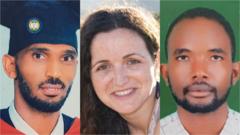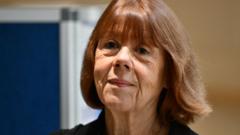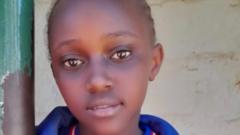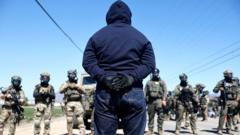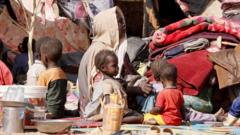Teenage girls in Afghanistan face a bleak educational landscape due to the Taliban’s ongoing ban on secondary schooling. While numerous madrassas provide basic education in religious and secular subjects, they fall short of the comprehensive education offered by traditional schools. Despite their challenges, these facilities serve as vital lifelines, with young women like Amina holding onto hopes of a brighter future.
Afghan Girls Find Hope in Madrassas Amid School Bans

Afghan Girls Find Hope in Madrassas Amid School Bans
As over a million Afghan girls are denied secondary education, madrassas emerge as a crucial, albeit imperfect, alternative for learning.
Afghanistan's educational landscape for girls has become increasingly dire, with more than a million young women barred from attending school since the Taliban took control in 2021. Amina, 15, is among those whose dreams of becoming a doctor have been put on hold. Her father broke the devastating news that girls over 12 would be denied access to education for the fourth consecutive year, leaving her heartbroken and uncertain about the future.
Once filled with aspirations, Amina's reality shifted dramatically. "When my dad told me the schools were closed, I was really sad," she shares, recalling the moment that altered her life. Stripped of her chance to learn from qualified teachers, she finds a modicum of hope in the madrassas—religious centers that now serve as the primary education option for girls in Afghanistan. However, critics raise concerns about their content, warning of indoctrination and lack of academic rigor.
Many families, particularly those unable to afford private schooling, turn to these institutions, hoping they can provide at least some education. Amina's brother, Hamid, founded the Al-Hadith madrassa, recognizing the toll the education ban had taken on his sister's well-being. He strives to blend religious teachings with vital life skills such as midwifery and first aid, though the latter was banned by the Taliban recently.
The bleak conditions within these madrassas highlight the challenges faced by students. In one such center, the Shaikh Abdul Qadr Jilani madrassa, over 1,800 girls study in a building devoid of adequate heating and comfort. Despite limited resources, a portion of the curriculum includes subjects traditionally considered academic, such as science and languages, alongside religious studies. However, staff struggle to demonstrate this balance, showcasing the ongoing struggle to provide a comprehensive education.
While graduates like Hadiya make efforts to inspire others in scientific fields, many still face dismissed dreams. Safia, a Pashto language teacher at Al-Hadith madrassa, underscores the importance of diversification in education, emphasizing that madrassas can never replace schools and universities, which serve as essential to societal knowledge.
The UN has raised alarms about the long-term implications of the Taliban's restrictive education policies. Richard Bennett, the UN Special Rapporteur, warns that limiting educational opportunities for girls could foster radical ideologies amid rising unemployment and poverty in Afghanistan.
Despite these challenges, Amina remains hopeful. "I still believe that one day the Taliban will allow schools and universities to reopen," she states resolutely. Her determination reflects not just her dreams, but the aspirations of countless Afghan girls like her, holding onto the hope of educational freedom and personal growth in an uncertain future.








